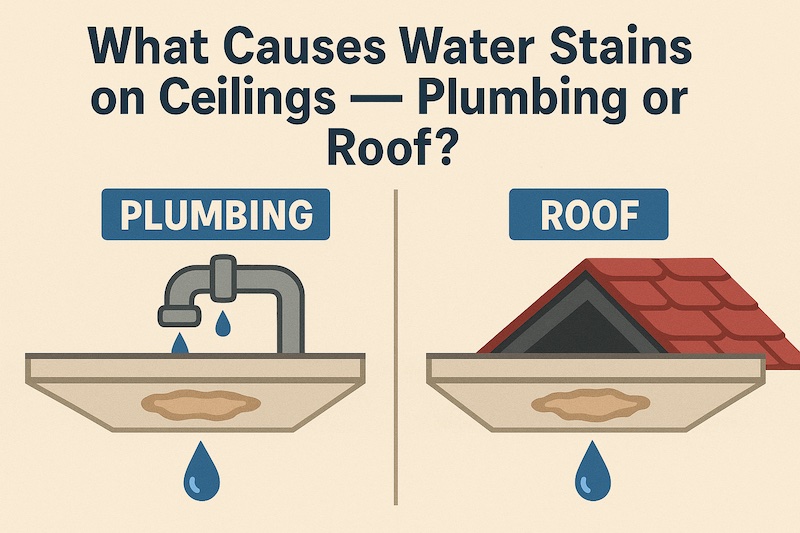What Causes Water Stains on Ceilings — Plumbing or Roof?

Water stains on your ceiling are a clear warning sign that something is wrong in your home. But the source isn’t always obvious. It could be a plumbing leak, a roof issue, or even condensation. Knowing how to identify the cause can save you from costly repairs.
1. Plumbing Leaks
A leaking pipe or fixture in the floor or wall above the ceiling can leave unsightly stains. Common signs of a plumbing leak include:
-
Stains directly below bathrooms, kitchens, or water heaters
-
Dripping water or sagging drywall
-
Musty odors near the stain
2. Roof Leaks
Roof problems, such as damaged shingles or flashing, can let water in during rain or snow. Look for these signs:
-
Stains near the edges of ceilings or around skylights
-
Water stains that appear after heavy rain
-
Damp or soft spots on the roof or attic
3. Condensation
Sometimes, water stains are caused by condensation rather than leaks. Poor insulation or ventilation can trap moisture, leading to stains over time.
4. How to Identify the Source
-
Inspect the attic or roof for water entry points
-
Check pipes, water heaters, and plumbing connections above the stain
-
Observe when stains appear (after rain vs. consistent dripping)
-
Consider professional leak detection for accurate diagnosis
5. Why Prompt Action Matters
Ignoring ceiling water stains can lead to mold growth, wood rot, and structural damage. Whether it’s a plumbing or roof issue, timely repair prevents bigger headaches and higher costs.
Call a Professional
If you can’t pinpoint the source of your ceiling water stain, contact a licensed plumber or roofing expert. Early intervention protects your home, health, and wallet.
